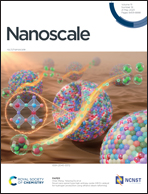Ultrahigh stable laminar graphene membranes for effective ionic and molecular nanofiltration with a machine learning-assisted study†
Abstract
Graphene oxide (GO) membranes have gained great attention for water purification due to the formation of stacked nanosheets giving nanocapillary channels. Unlike graphene, the interlayer spacing of GO membranes gets readily expanded in aqueous solution due to their high oxygen content, resulting in poor ion rejection. Herein, we prepared ultralow oxygen-containing graphene (∼1 at%) via facile liquid-phase exfoliation which was formed as membrane laminates. The graphene membranes exhibited ultrahigh stability with no observed swelling or deformation of the laminar structure when kept in water, aqueous salt solutions, and various pH solutions for over one week. The membranes with a high degree of tortuous nanocapillary channels can efficiently reject the ions found in seawater as well as various charged dye molecules. This indicates that the graphene membranes exhibited ionic and molecular sieving properties due to the effect of size exclusion obtained from the narrow nanocapillary channel and electrostatic repulsion from negatively charged graphene nanosheets. Moreover, we also demonstrated machine learning to gain insights into the membrane performance, which allowed us to obtain membrane optimization as a model for water purification technology.



 Please wait while we load your content...
Please wait while we load your content...